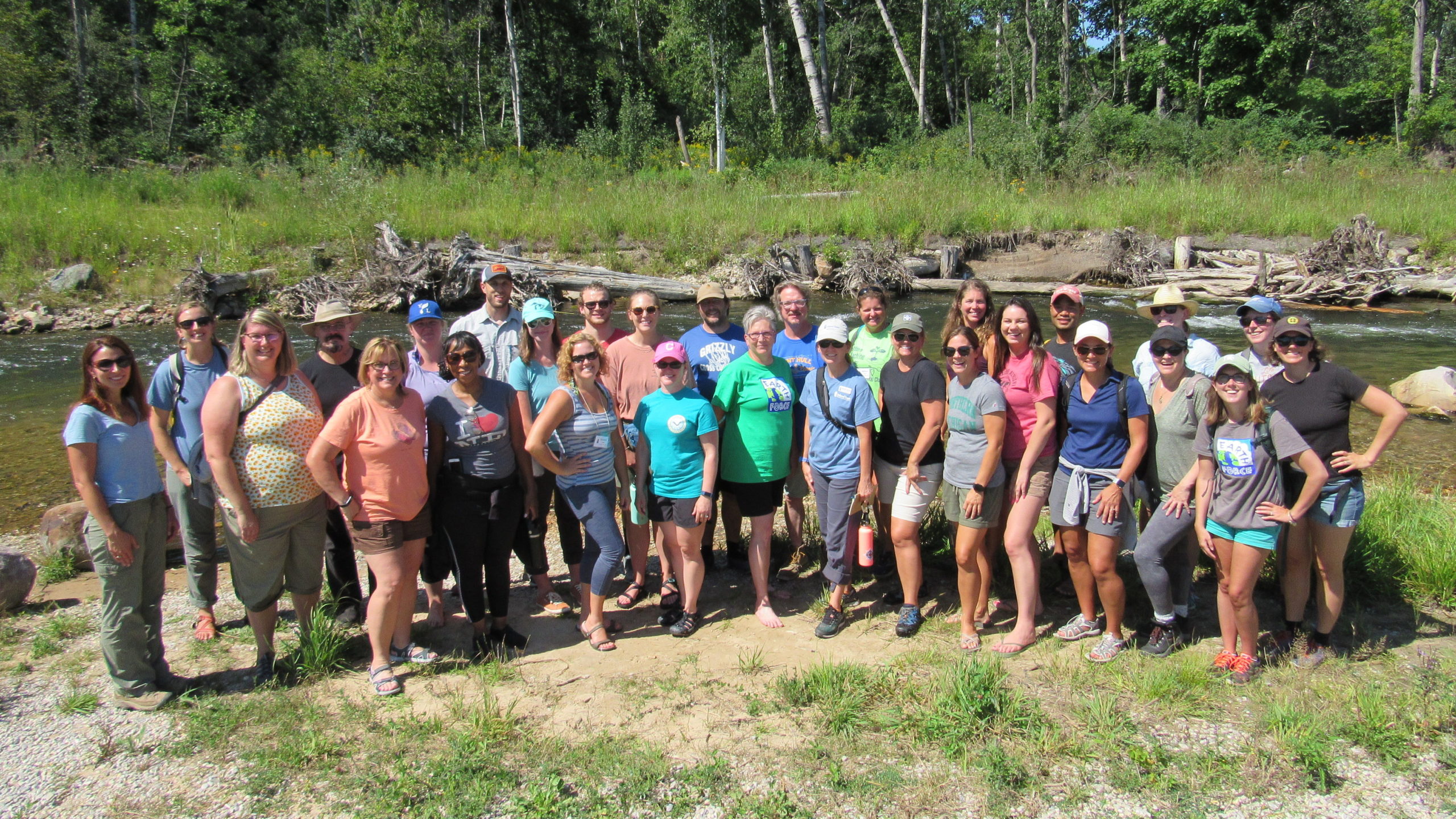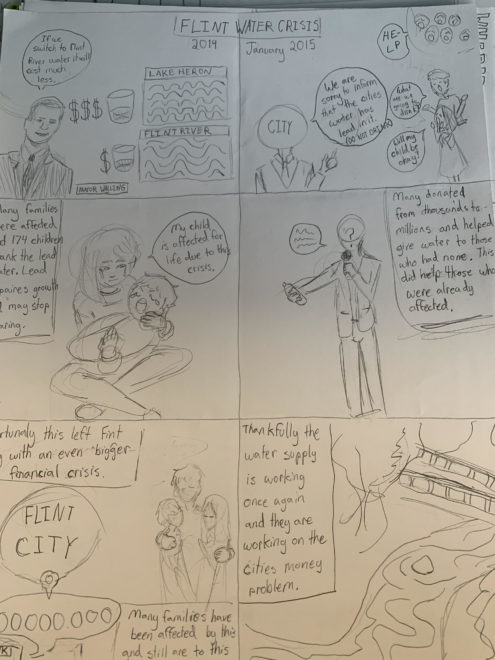What do teachers have in common with their students? Learning. Both are always learning and many teachers go into the field of teaching because they love to learn. (It doesn’t hurt that they like kids too.) Inland Seas Education Association offers an excellent hands-on professional development opportunity for educators called the Great Lakes Watershed Field Course (GLWFC).

The GLWFC is a multi-day experience for public, private, and informal teachers. Up to 30 educators from across the Great Lakes region participate in each cohort. Training in the course includes watershed and environmental concepts, place-based education and environmental education pedagogy, and time for curriculum development. Each day includes a hands-on environmental experience with local experts. In past GLWFC programs teachers learned from the Grand Traverse Bay Watershed Center, Grand Traverse Conservation District, Leelanau Conservancy, Grand Traverse Bay of Ottawa and Chippewa Indians, Conservation Resource Alliance, Northwest Michigan Invasive Species Network, and Inland Seas Education Association. Following the field course, ISEA supports the teachers throughout the school year with additional training, online forums, and other forms of assistance as they implement a stewardship action project with their students. As a benefit of participating in the course, each teacher receives a scholarship to bring their classroom of students to Suttons Bay for a Schoolship experience.
In this program, teachers not only learn more about the Great Lakes basin but also improve their craft as they receive training on the Earth Force framework for teaching their students. This project-based model starts with discovering environmental issues in their community, includes taking action on a well-researched and defined plan, and ends with a presentation or demonstration to an authentic audience about the project and their learning. Students are deeply engaged in their watershed-based stewardship action projects as the following examples demonstrate.
Microplastics
Students at Careerline Tech Center’s Natural Resources and Outdoor Studies program are studying microplastics. These Holland, MI students are collecting and analyzing samples from Lake Michigan beaches and are surprised at the number of plastics they are finding in locations where they like to hang out. As part of the project, students also conducted research and contacted stakeholders, such as the local wastewater treatment plant, to interview them about their awareness and views on the microplastics issue. Learn more about their research and civic action projects in this Holland Sentinel article.
Caring for Your Lake
Middle school students in Wisconsin are stewarding their local lake as they monitor water temperature and oxygen levels year-round. They also look at fish, zooplankton, and plants on and near the lake to determine its health. Students learn math and science through an authentic experience that has meaning to them and collaborates with partners throughout the community. The students also developed a website to showcase their knowledge.
Water Monitoring
Seventh-grade students in Ohio are monitoring the creek water on their campus. Students work in teams to collect samples, record data, document their findings, and present. In addition to looking for organisms, they tested the water quality and participated in the World Water Monitoring Challenge. This video shows students using the same scientific equipment used by professional scientists in their research (and in ISEA programs).

A Deeper Dive Into Invasive Species
Forest Hills sixth-grade students are studying invasive species in the Great Lakes. After kicking off their learning with a Schoolship program in October, students researched their chosen invasive species in science class and wrote about them in language arts. In each project, students focused on what they can do to help as well as what organizations are doing to remove invasive species.
Water Unit
Students in another part of Michigan are studying water at local, national, and global levels. This photo demonstrates a student’s learning from the Flint Water Crisis portion of the unit. Students had previously learned about the River on Fire (Cuyahoga River) and will be applying math through various scientific experiments related to water.
As you probably noticed, the student action projects focus on an environmental water-based topic and most encompass multiple subject areas. Over 60 teachers have participated in a GLWFC, impacting hundreds of students. During their careers, these teachers will guide thousands of students on their stewardship journey of protecting the Great Lakes.
Thanks to NOAA B-WET and The Herbert H. and Grace A. Dow Foundation grants, ISEA has been able to offer GLWFC cohorts in 2017, 2019, and 2021. Another cohort will begin in 2022 with the plan to continue offering the GLWFC annually into the future. If interested in more information about the GLWFC, please contact Juliana Lisuk at jlisuk@schoolship.org.
This blog was written by Lisa Sitkins, Marketing Consultant for Inland Seas Education Association.